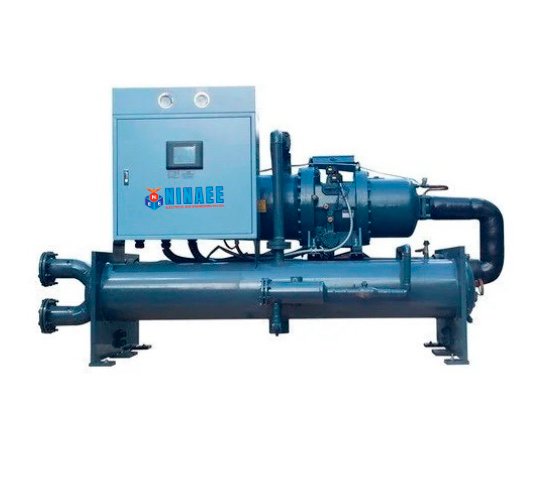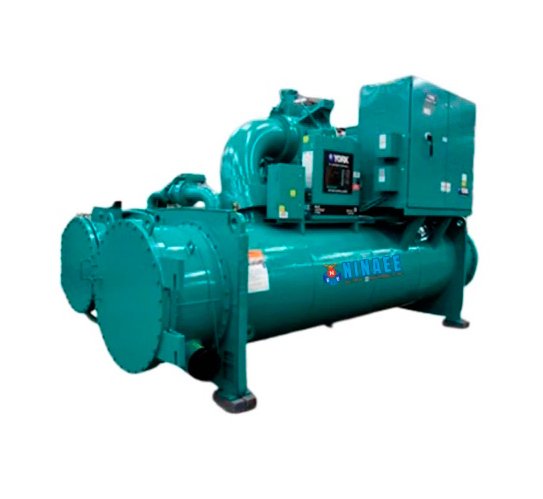


A Water-Cooled Chiller is a type of refrigeration system used to cool large commercial, industrial, or institutional buildings. It uses water instead of air to absorb and reject heat and is known for high efficiency and reliability, especially for large cooling loads.
Main Components of Water-Cooled Chiller
-
Compressor
-
Acts as the heart of the chiller.
-
Compresses low-pressure refrigerant vapor into high-pressure vapor.
-
-
Condenser (Water-cooled)
-
Transfers heat from the refrigerant to condenser water.
-
Uses a cooling tower to reject heat to the atmosphere.
-
-
Expansion Valve (or Device)
-
Reduces pressure and temperature of the refrigerant before entering the evaporator.
-
-
Evaporator
-
Chilled water absorbs heat from the building/process.
-
Refrigerant inside the evaporator evaporates, absorbing heat.
-
-
Cooling Tower
-
External unit used to cool the water from the condenser.
-
Essential for rejecting heat to the atmosphere.
-
-
Pumps
-
Chilled Water Pump: Circulates chilled water to the building.
-
Condenser Water Pump: Circulates water between condenser and cooling tower
-
Working Principle (Cycle)
-
Heat Absorption: Warm return water enters the evaporator and transfers heat to the refrigerant.
-
Compression: Vaporized refrigerant is compressed to high pressure.
-
Heat Rejection: Hot refrigerant releases heat to water in the condenser.
-
Cooling Tower: Heated condenser water is cooled in a cooling tower.
-
Chilled Water Distribution: Cold water is circulated back to the building.
Common Applications
-
Hospitals
-
Hotels
-
Malls
-
Manufacturing Plants
-
Data Centers
